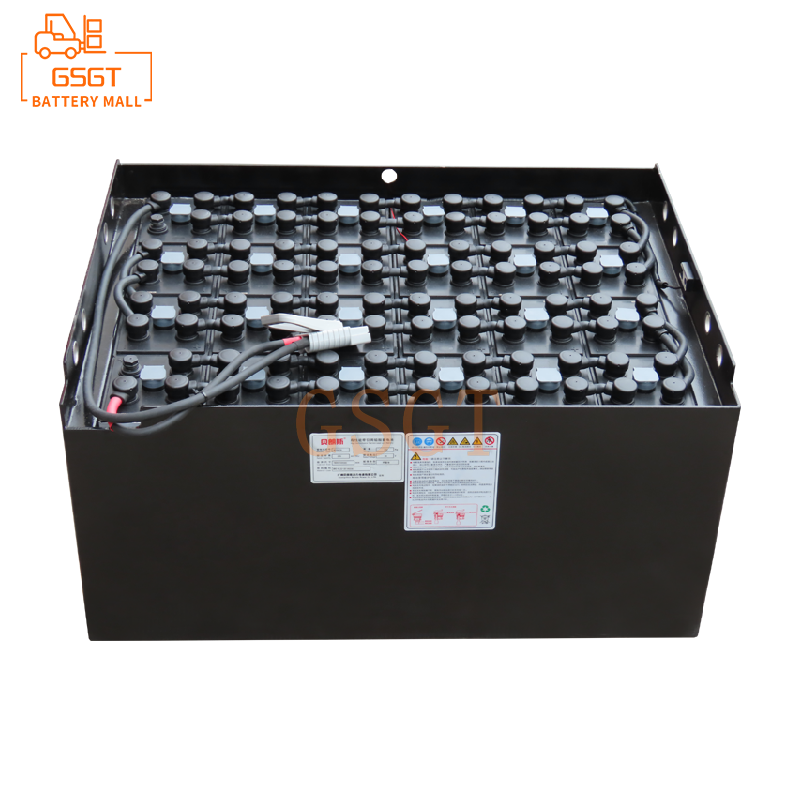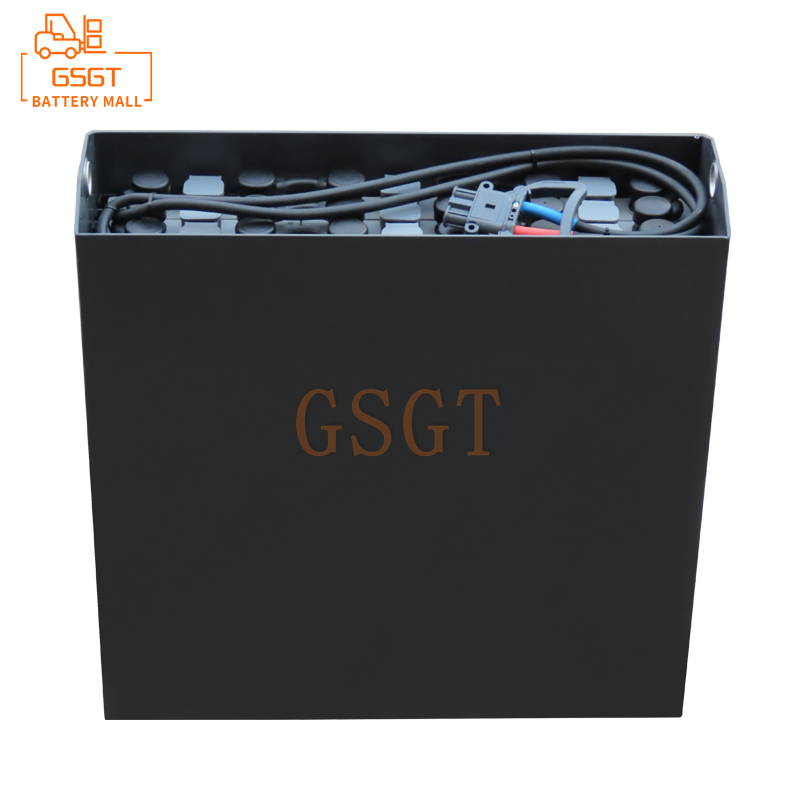Time:2025-07-08 09:47:29
Browse:616
In the daily operation of forklifts, lead-acid batteries play a crucial role. They are like the "heart" of the forklift, providing a continuous supply of power for its operation. Proper maintenance of lead-acid batteries not only extends their service life but also ensures the normal operation of forklifts and reduces usage costs. The following is a maintenance manual for forklift lead-acid batteries specially designed for entry-level users.
1. Key Points of Daily Inspection
Daily inspection is the fundamental work for maintaining lead-acid batteries in forklifts. Through regular checks, potential problems can be detected in a timely manner, preventing malfunctions from occurring.
1. Visual inspection
Before using the forklift every day, the appearance of the battery should be carefully inspected. Check the casing for any damage or cracks. If there is any damage, the electrolyte may leak, which not only corrodes the components around the battery but also affects the battery's performance. At the same time, check the connection lines of the battery to see if the terminals are loose or oxidized. If the terminals are oxidized, it will increase resistance and affect the transmission of current. You can rinse them with hot water, dry them, and then apply vaseline for protection.
2. Check the electrolyte level
For maintainable lead-acid batteries, it is necessary to regularly check the electrolyte level. The electrolyte level should be maintained at 10 to 15 millimeters above the plates. If the level is lower than the plates, it will cause oxidation of the plates and shorten the service life of the battery. When adding electrolyte, distilled water should be used. It is strictly forbidden to add tap water or electrolyte, as tap water contains impurities that can contaminate the electrolyte and affect the performance of the battery.
3. Voltage check
Use a multimeter to regularly check the voltage of the battery. When the forklift is not started, the no-load voltage of the battery should be too low. If it is too low, it may indicate that the battery is undercharged or faulty, and it needs to be charged or repaired in time.
2. Charging Standards
The correct charging method is the key to ensuring the performance and lifespan of the battery. Entry-level users must strictly follow the following charging norms.
1. Charging environment
Charging should be carried out in a well-ventilated, dry and flame-free environment. Avoid charging in a confined space to prevent hydrogen accumulation and explosion. At the same time, keep away from fire sources and flammable items to prevent fires.
2. Charging connection
Before charging, the power switch of the forklift should be turned off first. Then, the output terminal of the charger should be firmly connected to the terminals of the battery. Be careful not to reverse the positive and negative terminals, otherwise the charger and the battery will be damaged. After the connection is completed, turn on the input end of the charger to the power supply.
3. Charging time
The charging time of the battery should not be too long. Generally, the power supply should be cut off in time after it is fully charged. The charging time for batteries of different capacities varies. Users can determine it based on the instructions of the charger and the capacity of the battery. Overcharging can cause the electrolyte to evaporate too quickly, affecting the service life of the battery.
4. Charging process monitoring
During the charging process, the temperature of the battery should be monitored at all times. If the battery temperature is found to be too high or there is an abnormal smell, charging should be stopped immediately. Check whether there are any faults with the charger and the battery. Only resume charging after the faults have been eliminated.
3. Frequently Asked Questions and Answers
1. Q: After using the lead-acid battery of a forklift for a period of time, its power drops rapidly. What could be the reason?
Answer: There could be various reasons for the rapid decline in the battery power of a forklift's lead-acid battery. Firstly, it might be due to the aging of the battery. As the usage time increases, the plates gradually sulfate, resulting in a decrease in capacity. Secondly, improper charging can also affect the battery's capacity, such as insufficient charging time and charger malfunctions. In addition, if the electrolyte level is too low or there are too many impurities, it will also lead to a decline in battery performance and an accelerated drop in capacity. If such a situation occurs, the electrolyte level and charging condition should be checked first. If the problem is not solved, the battery may need to be replaced.
2. Q: What should be noted when using lead-acid batteries for forklifts in winter?
Answer: In winter, when the temperature is relatively low, the performance of lead-acid batteries will be affected to a certain extent. First of all, it is necessary to pay attention to the insulation of the battery. Avoid parking it for a long time in a low-temperature environment. You can park the forklift indoors or take insulation measures. Secondly, the charging time can be appropriately extended in winter, but overcharging should be avoided. In addition, the density of the electrolyte may change in winter. The density of the electrolyte should be checked regularly to ensure it remains within the normal range. If the battery power is insufficient, it should be charged in time to avoid being stored in a low-temperature environment with a depleted battery, otherwise it will accelerate the sulfation of the plates and shorten the battery's service life.
4. Maintenance Precautions
Avoid over-discharge: During the operation of forklifts, do not wait until the battery is completely drained before recharging. Over-discharge will accelerate the sulfation of the plates and affect the battery's lifespan. Generally speaking, when the battery is left at 20% to 30%, it should be charged in time.
Regular cleaning: The surface and terminals of the battery should be cleaned regularly to keep them clean and tidy, preventing the accumulation of dust and impurities that may cause poor contact. When cleaning, you can wipe with a dry cloth or a cloth dipped in a small amount of distilled water. Do not use corrosive cleaning agents.
Proper storage: If the forklift is not used for a long time, the battery should be fully charged before storage and replenished regularly to prevent battery depletion. The storage location should be dry, well-ventilated, away from direct sunlight and heat sources.
By following the above maintenance methods and precautions, entry-level users can effectively extend the service life of lead-acid batteries in forklifts and ensure the normal operation of forklifts. In actual operation, if complex problems are encountered, it is recommended to consult professional maintenance personnel.

$1060

$3050

$5710

$1200

MESSAGE
Professional And Efficient
Security
Affordable Price
Professional Services